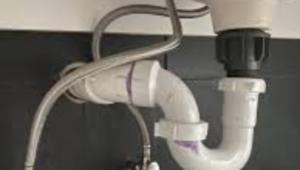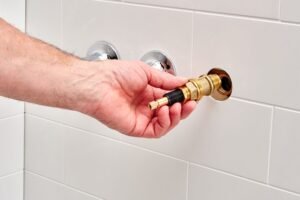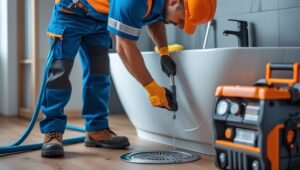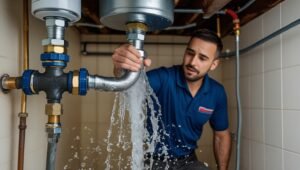Soldering copper pipes may seem challenging, but with the right guidance, it’s a skill anyone can master. This guide by Forever West Plumbing will walk you how to solder copper pipe through each step, helping you create leak-free, durable copper pipe joints for your next plumbing project.
What Is Copper Pipe Soldering?
Copper pipe soldering, often called “sweating,” involves joining copper pipes by melting solder into the joint. Known for its durability, this method is ideal for many plumbing projects and is a valuable skill for any DIY enthusiast or homeowner.
How to Solder Copper Pipe?
Let’s dive into the steps!
Step 1: Gather Your Tools and Materials
Here’s what you’ll need:
- Tubing cutter: To cut the copper pipe to the right length.
- Emery cloth or wire brush: For cleaning the pipe and fittings.
- Flux: A paste that helps the solder bond securely.
- Propane torch: Provides the heat needed for soldering.
- Lead-free solder: Fills and seals the joint.
Step 2: Measure and Cut the Pipe
Accurate measurement is crucial for a good fit. Measure your copper pipe, then use a tubing cutter to make a clean, even cut. Place the cutter around the pipe, tighten it gently, and rotate until the pipe is cut through. Be careful not to over-tighten, as copper can easily be crushed.
Tip: After cutting, use an emery cloth or deburring tool to smooth the inside edge of the pipe. This prevents sediment buildup over time.
Step 3: Clean the Pipe and Fittings
For a strong bond, clean both the outside of the pipe and the inside of the fitting until shiny. Use an emery cloth or wire brush to remove oxidation and ensure a smooth surface for soldering. A clean surface is essential for a leak-free joint.
Step 4: Apply Flux to the Joint
Flux helps draw the solder into the joint. Apply a generous amount to the outside of the pipe and the inside of the fitting. Flux prevents oxidation during heating, ensuring a secure, leak-proof seal.
Step 5: Assemble the Joint
Slide the pipe into the fitting to form a snug connection. Make sure the alignment is correct; once you start heating, you won’t be able to adjust the joint.
Step 6: Heat the Joint with a Propane Torch
Apply heat evenly around the joint with a propane torch. Avoid overheating any single spot, as this can damage the copper. Move the torch around the fitting until it’s evenly heated. You’ll know it’s ready when the flux starts bubbling.
Step 7: Apply the Solder
Touch the solder to the joint’s edge once it’s hot enough. The heat will draw the solder into the joint, forming a secure seal. Apply solder until you see a silver band around the joint, which indicates a complete seal. Avoid excess solder, as it can clog the pipe’s interior.
Tip: If a small solder bubble appears, don’t worry—it doesn’t affect the joint’s strength.
Step 8: Clean Up the Joint
Once cool, wipe away any remaining flux with a damp cloth to prevent corrosion. Congratulations—you’ve completed your first soldered joint!
Common Mistakes to Avoid
- Skipping cleaning: Solder won’t adhere to a dirty surface.
- Not using flux: Flux is essential for drawing solder into the joint.
- Overheating: This can weaken the copper and compromise the joint.
- Applying too much solder: Excess solder can obstruct the pipe.
FAQs
1. Can I use a regular soldering iron for copper pipes?
No, standard soldering irons don’t reach the high temperatures needed. A propane torch is essential.
2. How much solder should I use?
Use enough to form a silver ring around the joint. More than that could clog the pipe.
3. What if the joint leaks?
If a joint leaks, disassemble by reheating, clean thoroughly, apply new flux, and re-solder.
4. Is lead-free solder necessary?
Yes, lead-free solder is safe for plumbing and complies with modern building codes.
5. Can I reuse a fitting that’s been soldered?
Yes, by heating, disassembling, cleaning, and reapplying flux, you can reuse the fitting.
Final Thoughts
Learning to solder copper pipes can be incredibly rewarding, saving time and ensuring durable, reliable plumbing. Forever West Plumbing encourages you to take the plunge and try soldering—your next project awaits!
For expert plumbing services, click here to avail services.







2 Responses